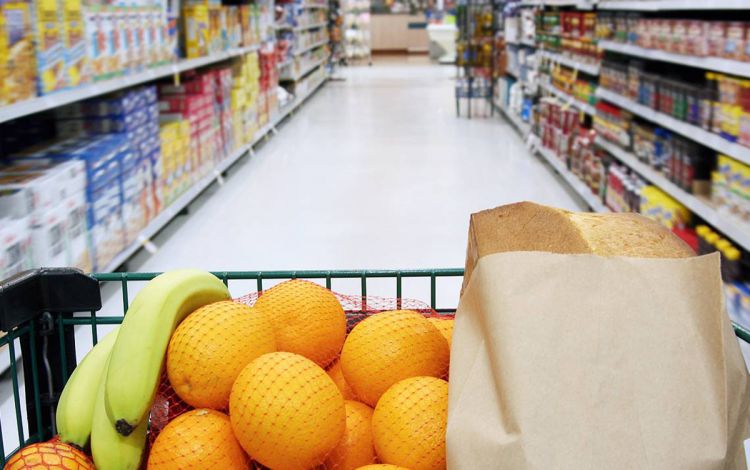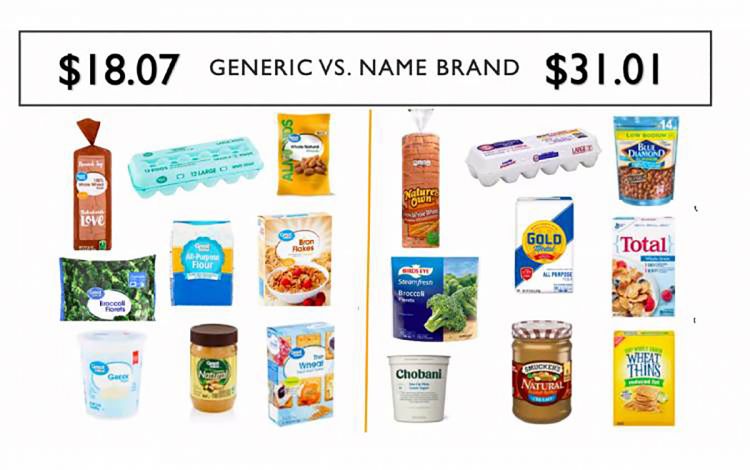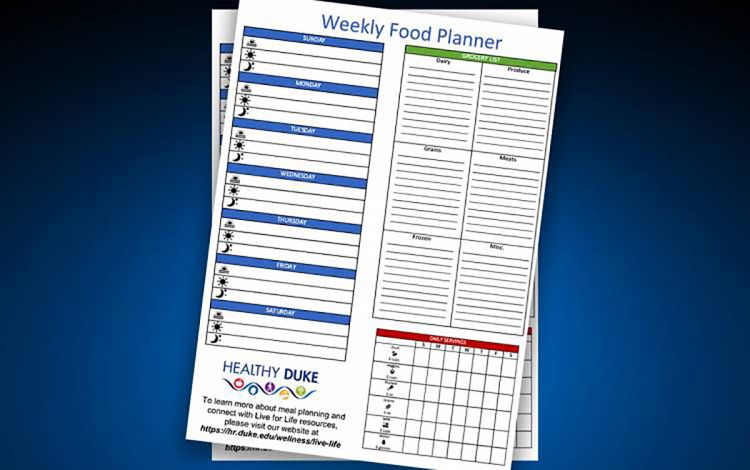Nutrition Experts: How to Eat Healthy Amid Rising Grocery Costs
Find strategies for sticking to a budget and your health

For Rushdee Omar, finding the time and energy to cook a healthy meal for his family of four can be overwhelming at the end of a workday.
Omar, who has worked at Duke seven years, said it can be tempting to swing by Arby’s or McDonald’s for take-out instead of cooking his go-to meal of salmon at home for his wife and two daughters, ages 3 and 7.
“It’s easier to get off the healthy train,” said Omar, an administrative manager for DCRI.
With questions about how to stay on a healthy path, Omar turned to LIVE FOR LIFE, Duke’s employee wellness program, for live webinars on the topic. He learned he wasn’t the only person looking for strategies to make smart food choices, while saving money on grocery bills.
With food prices rising 10 percent since last May — the largest annual increase in 41 years, according to the U.S. Bureau of Labor Statistics — grocery dollars have had to stretch especially when prioritizing healthy options.
 “When people really start to adhere to eating healthy foods throughout the day on a regular basis, they just feel like they have more energy to get things done in their day,” said Esther Granville, nutrition program manager for LIVE FOR LIFE, Duke’s employee wellness program. “It’s just going to make them feel better.”
“When people really start to adhere to eating healthy foods throughout the day on a regular basis, they just feel like they have more energy to get things done in their day,” said Esther Granville, nutrition program manager for LIVE FOR LIFE, Duke’s employee wellness program. “It’s just going to make them feel better.”
Here are some strategies to eat healthy while sticking to a tighter budget.
Find the best deals
 A tried-and-true way to cut costs is to find sales and use coupons.
A tried-and-true way to cut costs is to find sales and use coupons.
When Granville hosted a gathering of coworkers at her home this summer, she wanted to grill chicken, which was $2.79 per pound at her usual store. She researched deals online and found a sale of chicken for 99 cents per pound at a different grocery store.
Most grocery stores advertise prices and digital coupons on their websites, but there are also mobile apps to make finding deals easy.
For coupons, there’s “Flipp,” a website and app that provides hundreds of ads and coupons based on zip code. “Flipp” lets users search for deals based on specific items. Another app, “Basket,” allows you to create a shopping list and instantly see a price comparison between grocery stores in real-time.
“You can go to different stores for that better price,” said Granville, who uses the Basket app.
Make a simple plan
 To avoid getting off track at a grocery store, Granville recommends sticking to a weekly meal plan. The practice of writing out a list based on recipes helps you stick to a healthy set of items and prevents overspending.
To avoid getting off track at a grocery store, Granville recommends sticking to a weekly meal plan. The practice of writing out a list based on recipes helps you stick to a healthy set of items and prevents overspending.
In addition, the mobile app “Mealime” supplies meal plans based on dietary needs and provides a grocery list based on the number of people you are feeding.
“One of the big things that dietitians will talk about is the idea of planning ahead,” Granville said. “One way that you can really cut down on food waste is really by just planning what it is that you’re actually going to cook and eat that week.”
Marsha Perry, a Duke Law School library associate, recently started using a strategy that helps her save money on food. She goes over recipes with her husband and builds a list on the Notes app on her phone, then she orders groceries online. That way, she doesn’t make off-list purchases in the store.
“I don’t tend to do my impulse buying when I sit down and make an order,” Perry said.
Granville also suggests focusing on basic ingredients on a plate such as beans, fruits, grains and vegetables that make for colorful meals. This approach can cut down on the need for meat, one of the most expensive grocery items.
Pick canned or frozen foods
 Using canned and frozen foods can save time and money without compromising nutrition.
Using canned and frozen foods can save time and money without compromising nutrition.
These items, like frozen broccoli, canned beans and frozen fruits, are staples at Granville’s home. Beans in particular are a versatile protein that can become the star of many kinds of meals, heated up and seasoned for wraps, soups, vegetable bowls and more.
When it comes to frozen foods, Granville suggests picking a small variety of fruits and vegetables that can be used quickly for a meal.
“If you’re in a hurry, maybe you didn’t plan as well as normal, those things like frozen, mixed vegetables you can pull out of the freezer and have ready on your plate in two to three minutes,” Granville said. “It’s just a really great thing to have in terms of keeping that plate really healthy.”
For Omar, canned chicken comes in handy for chicken salad during the work week. Instead of cooking the meat, he can use the canned chicken to prepare lunches for the entire week.
“Canned chicken, a little bit of mayonnaise, some celery, pepper and we’re done,” he said. “You can make it a sandwich or you can just throw it on your plate.”
Send story ideas, shout-outs and photographs through our story idea form or write working@duke.edu.